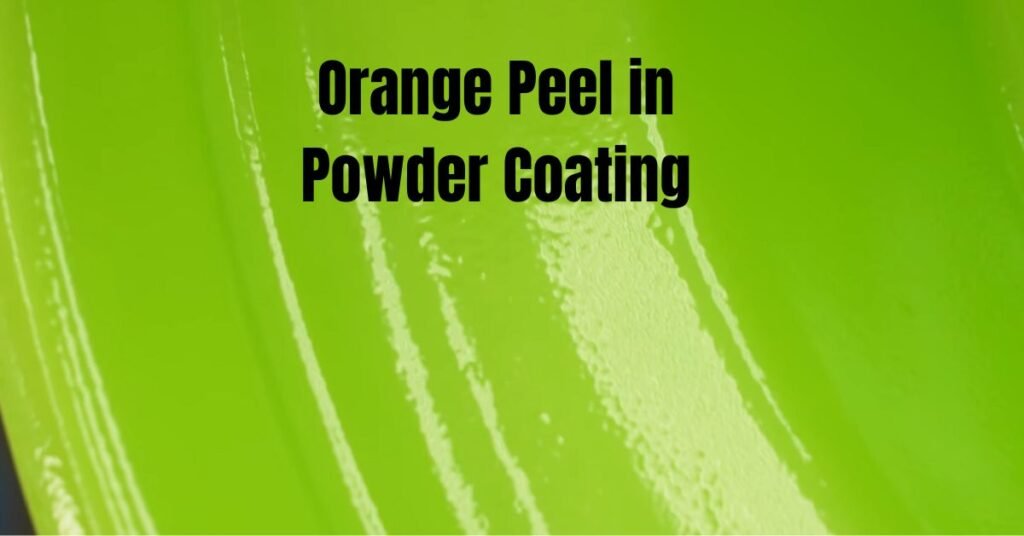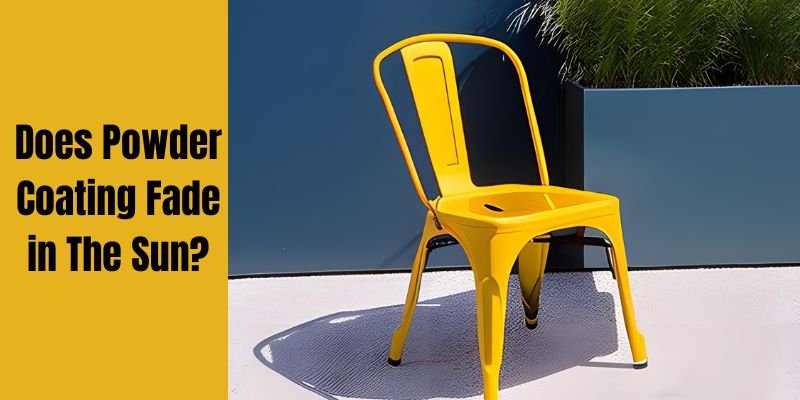Welcome to our ultimate guide on powder coated steel toxicity! If you’ve ever wondered whether this popular material is truly safe or if it’s hiding any potential dangers, you’re in the right place. In this article, we will delve into the topic of whether powder coated steel is toxic, exploring its composition, manufacturing process, and potential health risks associated with its use. Let’s jump right in!

Understanding Powder Coated Steel
Powder coated steel refers to steel that has been coated with a dry powder paint through a process known as powder coating. This technique involves electrostatically applying a fine powder onto the surface of the steel, which is then cured under heat, forming a protective and decorative layer.
Is Powder Coated Steel Toxic?
Powder coated steel is generally considered safe and non-toxic. However, there are some potential concerns regarding its toxicity that you should be aware of.
Read More: Is Powder Coated Steel Rust-Proof?
The Composition of Powder Coatings
Powder coatings used on steel surfaces are typically composed of a mixture of resins, pigments, and additives. Resins serve as the binding agents, holding the powder particles together and ensuring adhesion to the steel surface. Pigments provide color and aesthetic appeal, while additives enhance various properties such as durability, flexibility, and UV resistance.
Manufacturing Process and Safety Measures
During the manufacturing process of powder coated steel, the powder coating is applied in a controlled environment to minimize the risk of exposure to harmful substances. Strict safety measures are implemented to protect workers and prevent the release of toxic fumes or particles into the environment.
Potential Health Risks
While powder coated steel is generally considered safe for everyday use, certain factors should be taken into consideration to minimize potential health risks. One such factor is the release of volatile organic compounds (VOCs) during the curing process. VOCs are chemicals that can have adverse effects on human health when inhaled in high concentrations.
Mitigating Health Risks
To mitigate potential health risks associated with powder coated steel, it is essential to ensure proper ventilation during the curing process. Adequate airflow helps dissipate any VOCs that may be released, reducing exposure levels. Additionally, manufacturers can employ advanced filtration systems to capture and remove any airborne particles, further enhancing safety measures.
Regulatory Standards and Certifications
To maintain safety standards, various regulatory bodies, such as the Occupational Safety and Health Administration (OSHA), enforce guidelines and regulations regarding the use of powder coatings. These regulations aim to protect workers from potential hazards and ensure that manufacturers adhere to safe practices during the production and application of powder coatings.
Real-Life Examples
In recent years, several industries have successfully utilized powder coated steel without significant health concerns. For instance, the automotive industry extensively employs powder coated steel in the manufacturing of car bodies, frames, and components. Similarly, outdoor furniture manufacturers utilize powder coated steel to enhance the durability and weather resistance of their products.\
Powder Coated Steel vs Other Materials
When it comes to choosing materials for your products, you have many options to consider. Powder coated steel is just one of them. Here’s how it compares to some other materials:
Powder Coated Steel vs Stainless Steel
Stainless steel is known for its durability and corrosion resistance. However, it can be more expensive than powder coated steel. Additionally, stainless steel may not be suitable for certain applications where powder coated steel would be a better fit, such as outdoor furniture.
More details about powder coated steel vs stainless steel
Powder Coated Steel vs Aluminum
Aluminum is a lightweight material that is also corrosion-resistant. However, it can be more expensive than powder coated steel. Additionally, aluminum may not be as strong as steel, which means it may not be suitable for applications where strength is a top priority.
Powder Coated Steel vs Plastic
Plastic is a popular material for many products due to its low cost and versatility. However, it is not as strong as steel and may not be suitable for applications where durability is a top priority. Additionally, plastic may not be as environmentally friendly as powder coated steel, which is recyclable.
In summary, powder coated steel is a versatile and cost-effective material that is suitable for a wide range of applications. While it may not be the best fit for every product, it is worth considering for its durability, strength, and environmental benefits.
Is Powder-Coated Steel Eco-Friendly?
When it comes to eco-friendliness, powder-coated steel is a better option than some other materials. Here are some reasons why:
- Powder coating is a process that uses no solvents or VOCs, which means it produces no harmful emissions and is safe for the environment.
- Powder-coated steel is highly durable and long-lasting, which means it doesn’t need to be replaced as often as other materials, reducing waste.
- Powder coating can be done with a variety of colors, eliminating the need for painting, which can be harmful to the environment due to the use of solvents and chemicals.
However, it’s important to note that the production of steel itself is not always eco-friendly. The mining and processing of iron ore can have negative impacts on the environment, and steel production can be energy-intensive. That being said, powder-coated steel is still a more sustainable option than some other materials, especially if it is recycled.
Overall, if you’re looking for an eco-friendly option for your next project, powder-coated steel is definitely worth considering. It’s durable, long-lasting, and safe for the environment, making it a great choice for a variety of applications.
Is All Powder Coating Non-Toxic?
Powder coating is generally considered to be a safe, non-toxic coating option. However, not all powder coatings are created equal. Some may contain toxic substances, such as heavy metals or volatile organic compounds (VOCs), which can be harmful to humans and the environment.
To ensure that you are using a non-toxic powder coating, it is important to check its composition. Look for powder coatings that are labeled as “low-VOC” or “VOC-free.” These coatings contain fewer or no harmful chemicals, making them a safer option.
It is also important to note that while powder coating itself may be non-toxic, the process of applying the coating can produce harmful byproducts. For example, the process of curing powder coatings can release small amounts of VOCs into the air. This is why it is important to use proper ventilation and safety equipment when applying powder coatings.
Overall, while not all powder coatings are non-toxic, there are many options available that are safe for both humans and the environment. By checking the composition of your powder coating and taking proper safety precautions during application, you can ensure that your powder coated steel is both beautiful and safe.
Does Sun Exposure Affect the Fade Resistance of Powder Coating?
Powder coating fade in the sun is a legitimate concern for many. Extended sun exposure can lead to color fading and a decrease in the overall durability of powder coating. Protective measures, like using UV inhibitors or choosing high-quality pigments, can help mitigate the effects of sun exposure. Regular maintenance and cleaning also aid in preserving the vibrant appearance and fade resistance of powder coating.
Conclusion
When considering the question of whether powder coated steel is toxic, it is crucial to understand the composition, manufacturing process, and potential health risks associated with its use. While certain precautions should be taken to minimize exposure to volatile organic compounds, the overall safety record of powder coated steel is favorable when proper safety measures are implemented.
By adhering to regulatory standards and following recommended practices, powder coated steel can continue to be a reliable and widely-used material across various industries, providing both aesthetic appeal and durability. Remember, if you have any more questions or require further clarification on the topic, feel free to ask.


